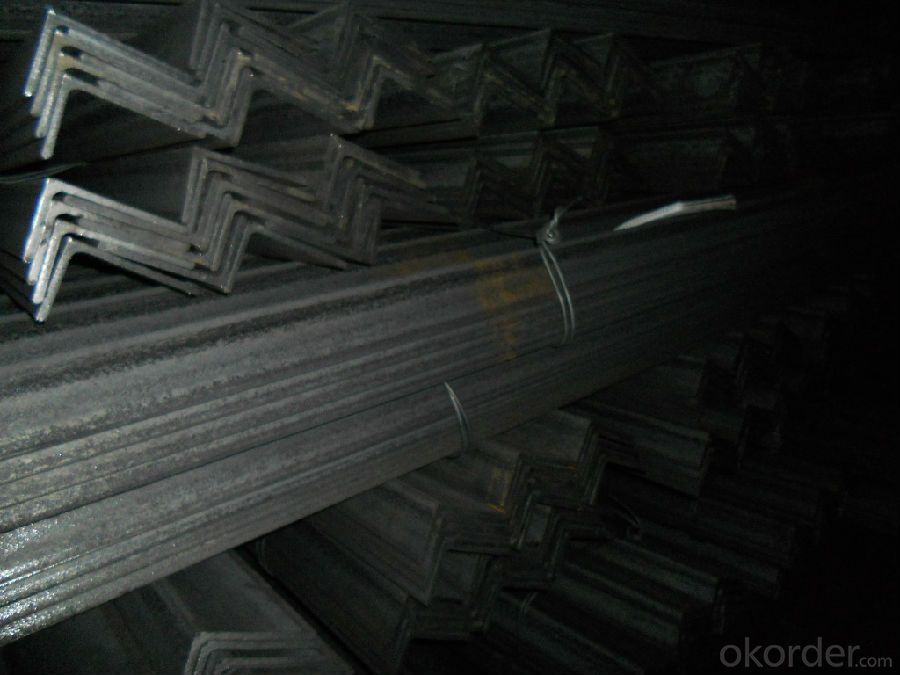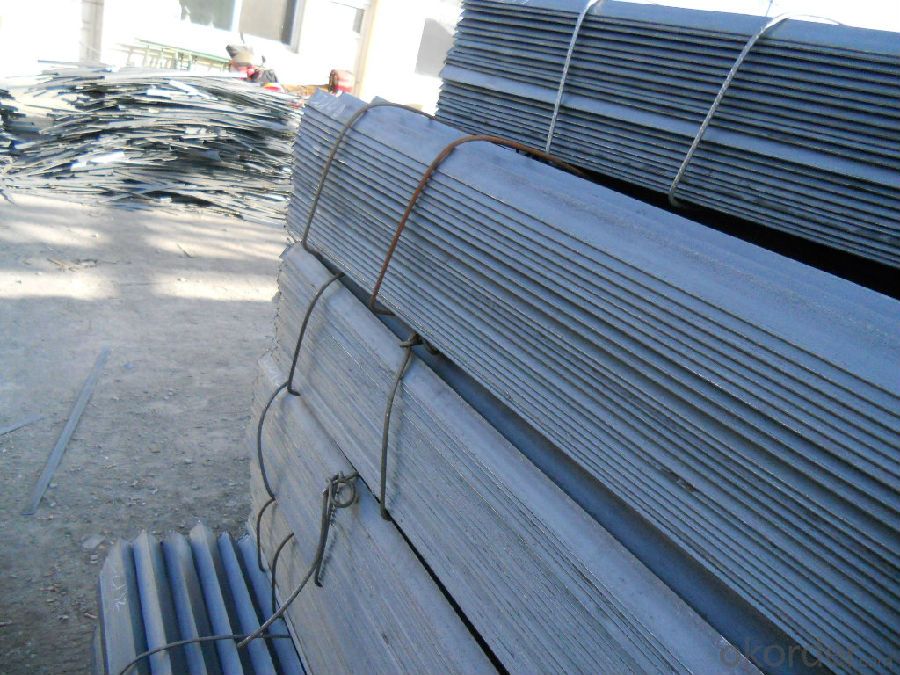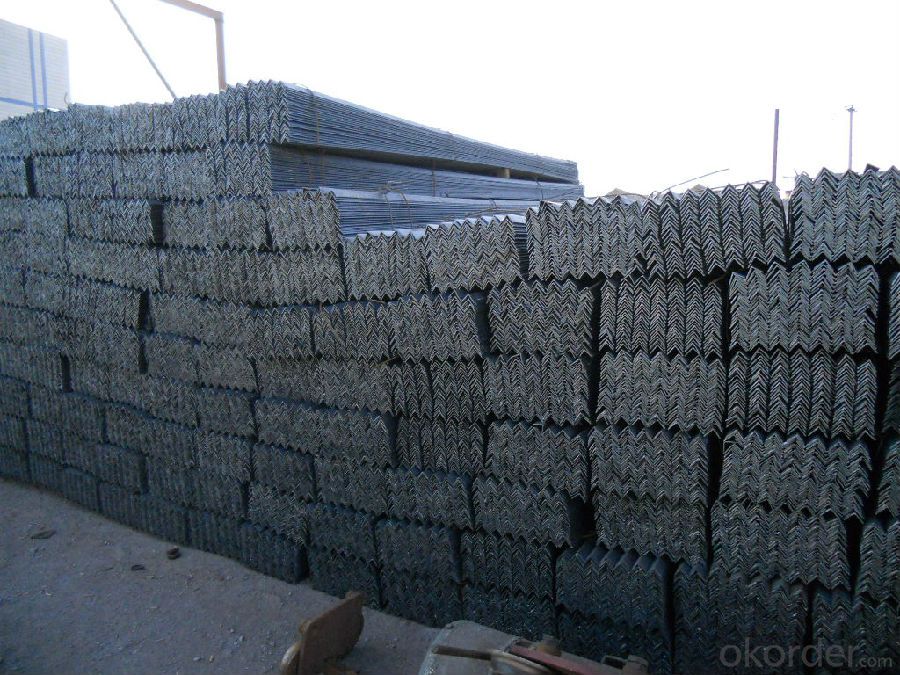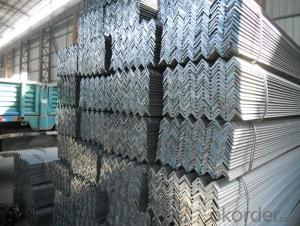HR Steel Angle Beams for Structures and for Buildings
- Loading Port:
- Guangzhou
- Payment Terms:
- TT OR LC
- Min Order Qty:
- 25 m.t.
- Supply Capability:
- 200000 m.t./month
OKorder Service Pledge
OKorder Financial Service
You Might Also Like
Product Description:
OKorder is offering HR Steel Angle Beams for Structures and for Buildings at great prices with worldwide shipping. Our supplier is a world-class manufacturer of steel, with our products utilized the world over. OKorder annually supplies products to European, North American and Asian markets. We provide quotations within 24 hours of receiving an inquiry and guarantee competitive prices.
Product Applications:
HR Steel Angle Beams for Structures and for Buildings are ideal for structural applications and are widely used in the construction of buildings and bridges, and the manufacturing, petrochemical, and transportation industries.
1. Supporting members, most commonly in the house raising industry to strengthen timber bears under houses. Transmission line towers, etc
2. Prefabricated structure
3. Medium scale bridges
4. It is widely used in various building structures and engineering structures such as roof beams, bridges, transmission towers, hoisting machinery and transport machinery, ships, industrial furnaces, reaction tower, container frame and warehouse etc.
Product Advantages:
HR Steel Angle Beams for Structures and for Buildings are durable, strong, and resist corrosion. And all the beams will be produced by steel billets of high quanlity in China with competitive prices.
Main Product Features:
· Premium quality
· Prompt delivery & seaworthy packing (30 days after receiving deposit)
· Corrosion resistance
· Can be recycled and reused
· Mill test certification
· Professional Service
· Competitive pricing
Product Specifications:
1. Invoicing on theoretical weight or actual weight as customer request
2. Length: 6m, 9m, 12m as following table
3. Sizes

Sizes: 25mm-250mm | ||
a*t | ||
25*2.5-4.0 | 70*6.0-9.0 | 130*9.0-15 |
30*2.5-6.6 | 75*6.0-9.0 | 140*10-14 |
36*3.0-5.0 | 80*5.0-10 | 150*10-20 |
38*2.3-6.0 | 90*7.0-10 | 160*10-16 |
40*3.0-5.0 | 100*6.0-12 | 175*12-15 |
45*4.0-6.0 | 110*8.0-10 | 180*12-18 |
50*4.0-6.0 | 120*6.0-15 | 200*14-25 |
60*4.0-8.0 | 125*8.0-14 | 250*25 |
5. Payment terms:
1).100% irrevocable L/C at sight.
2).30% T/T prepaid and the balance against the copy of B/L.
3).30% T/T prepaid and the balance against L/C
6.Material details:
Alloy No | Grade | Element (%) | |||||
C | Mn | S | P | Si | |||
Q235 | B | 0.12—0.20 | 0.3—0.7 | ≤0.045 | ≤0.045 | ≤0.3 | |
Alloy No | Grade | Yielding strength point( Mpa) | |||||
Thickness (mm) | |||||||
≤16 | >16--40 | >40--60 | >60--100 | ||||
≥ | |||||||
Q235 | B | 235 | 225 | 215 | 205 | ||
Alloy No | Grade | Tensile strength (Mpa) | Elongation after fracture (%) | ||||
Thickness (mm) | |||||||
≤16 | >16--40 | >40--60 | >60--100 | ||||
≥ | |||||||
Q235 | B | 375--500 | 26 | 25 | 24 | 23 | |
FAQ:
Q1: How do we guarantee the quality of our products?
A1: We have established an advanced quality management system which conducts strict quality tests at every step, from raw materials to the final product. At the same time, we provide extensive follow-up service assurances as required.
Q2: How soon can we receive the product after purchase?
A2: Within three days of placing an order, we will begin production. The specific shipping date is dependent upon international and government factors, but is typically 7 to 10 workdays.
Q4: Can HR Steel Angle Beams for Structures and for Buildings rust?
A4: Maybe there is some little rust on the suface of goods, but it dosen't afect the usage.



- Q:What are the different types of steel angles used in transmission line towers?
- There are several different types of steel angles that are commonly used in transmission line towers. These angles are specifically designed to provide structural support and stability to the towers, ensuring that they can withstand the weight of the transmission lines and the environmental conditions they are exposed to. 1. Equal leg angle: This type of angle has two legs of equal length, forming a right angle. It is a widely used angle in transmission line towers due to its simple design and ease of fabrication. 2. Unequal leg angle: As the name suggests, this type of angle has two legs of unequal length, forming an acute or obtuse angle. Unequal leg angles are used in transmission line towers when there is a need for specific load-bearing requirements. 3. Bulb angle: Bulb angles have a unique shape with a bulbous end that provides additional strength and stability. This type of angle is often used in critical areas of transmission line towers that require extra support, such as at the base or at connection points. 4. Lipped angle: Lipped angles have an extended lip on one side, which increases their load-bearing capacity. This type of angle is commonly used in transmission line towers where there is a need for increased strength and stability. 5. Back-to-back angle: Back-to-back angles are two equal leg angles joined back-to-back with their flanges touching. This configuration creates a wider angle that offers enhanced load-bearing capabilities and resistance to bending. It is often used in transmission line towers where higher loads or longer spans need to be supported. Each type of steel angle used in transmission line towers has its own unique characteristics and advantages, allowing engineers to select the most appropriate angle for the specific requirements of the tower design. These angles are carefully chosen to ensure the overall strength, stability, and durability of the transmission line tower, ultimately contributing to the reliable and efficient transmission of electricity.
- Q:Are steel angles suitable for historical restoration projects?
- Historical restoration projects can benefit from the suitability of steel angles. These versatile and durable materials are ideal for enhancing structural support and reinforcement in historic buildings. In fact, they can be employed to revive or duplicate original architectural elements like window frames, ornamental railings, and decorative features. Moreover, steel angles can be custom-made to perfectly match the original design, seamlessly merging with the existing structure. Nonetheless, it is crucial to take into account the specific demands and regulations of the historical restoration project, as some preservation authorities may impose limitations on the use of contemporary materials. Seeking guidance from experts in historical restoration and obtaining the necessary approvals will guarantee the appropriate and effective utilization of steel angles in preserving the historical integrity of the building.
- Q:Can steel angles be used for storage rack systems?
- Yes, steel angles can be used for storage rack systems. Steel angles provide structural support and stability, making them a suitable choice for constructing storage racks that can hold heavy loads and withstand frequent use. The versatility and strength of steel angles make them a popular choice in various industrial and commercial storage applications.
- Q:Can steel angles be used for framing windows?
- Indeed, framing windows with steel angles is a viable option. Widely employed in construction, steel angles offer supplementary structural support and stability as window frames. Their durability, strength, and ability to resist warping or bending make them well-suited for this task. Moreover, steel angles can be effortlessly tailored and modified to match the precise measurements and specifications of the window frame, ensuring a secure and accurate installation.
- Q:Can steel angles be used for support brackets in electrical installations?
- Indeed, support brackets for electrical installations can certainly utilize steel angles. In construction, steel angles are frequently employed and offer robust support for a multitude of applications, including electrical installations. These angles possess impressive strength and durability, enabling them to withstand the weight and stress imposed by supporting electrical components or fixtures. Furthermore, steel angles can be effortlessly affixed to walls, ceilings, or alternative surfaces, thereby establishing a reliable foundation for electrical equipment such as junction boxes, conduit, or cable trays. Furthermore, steel angles can be tailored and fabricated to accommodate precise installation specifications, rendering them an adaptable selection for support brackets in electrical installations.
- Q:How do steel angles perform in terms of impact resistance?
- Steel angles generally perform well in terms of impact resistance. Due to their structural design, steel angles are able to withstand high impact forces and distribute them evenly across their length. This makes them suitable for applications where impact or dynamic loads are expected, such as in construction, industrial machinery, or automotive frames. The high strength and toughness of steel also contribute to its excellent impact resistance. Steel angles are typically made from low carbon steel or alloy steel, which are known for their high tensile strength and ability to absorb energy without fracturing. This enables steel angles to resist deformation and maintain their structural integrity even under heavy impact. Furthermore, steel angles can be further improved in terms of impact resistance by using specific steel grades or by applying surface treatments such as galvanization or powder coating. These treatments can enhance the corrosion resistance and overall durability of steel angles, making them even more resistant to impact and other harsh environmental conditions. However, it is important to note that the specific impact resistance of steel angles can vary depending on factors such as the dimensions, thickness, and material properties of the angle. Therefore, it is recommended to consult with a structural engineer or refer to technical specifications provided by manufacturers to ensure that the steel angle chosen is suitable for the intended application and expected impact loads.
- Q:What is the maximum deflection allowed for a steel angle?
- The maximum deflection permitted for a steel angle relies on multiple factors, including the size, shape, and type of steel angle utilized, as well as the specific application and design prerequisites. To ensure structural integrity and safety, the deflection limit is typically determined in accordance with engineering standards and codes. Steel angles are generally engineered to withstand diverse loads and stresses, and their allowable deflection is determined based on these considerations. Engineers calculate the maximum permissible deflection to ensure that the angle can support applied loads securely, without experiencing excessive deformation or failure. To ascertain the maximum deflection allowed for a particular steel angle, one must refer to design standards and specifications provided by professional engineering organizations, such as the American Institute of Steel Construction (AISC), or relevant building codes. These documents outline the maximum permissible deflection limits based on specific parameters of the steel angle, including dimensions, material properties, and intended usage. Consulting the appropriate design standards and codes is crucial to ensuring compliance with safety regulations and guaranteeing the structural integrity of the steel angle in its intended application.
- Q:How do steel angles perform under lateral or wind loading conditions?
- Steel angles are commonly used in construction for their ability to withstand lateral or wind loading conditions. Due to their shape and structural design, steel angles offer excellent resistance against bending and twisting forces. They distribute the applied loads efficiently, ensuring stability and minimizing any potential structural damage. Overall, steel angles are reliable and perform exceptionally well under lateral or wind loading conditions.
- Q:Can steel angles be used in marine environments?
- Yes, steel angles can be used in marine environments. However, it is crucial to select the appropriate grade of stainless steel or corrosion-resistant coating to prevent corrosion and ensure durability in the harsh marine conditions.
- Q:Can steel angles be used in modular construction?
- Yes, steel angles can indeed be used in modular construction. They are commonly used as structural elements to provide stability and support in modular buildings.
1. Manufacturer Overview |
|
|---|---|
| Location | |
| Year Established | |
| Annual Output Value | |
| Main Markets | |
| Company Certifications | |
2. Manufacturer Certificates |
|
|---|---|
| a) Certification Name | |
| Range | |
| Reference | |
| Validity Period | |
3. Manufacturer Capability |
|
|---|---|
| a)Trade Capacity | |
| Nearest Port | |
| Export Percentage | |
| No.of Employees in Trade Department | |
| Language Spoken: | |
| b)Factory Information | |
| Factory Size: | |
| No. of Production Lines | |
| Contract Manufacturing | |
| Product Price Range | |
Send your message to us
HR Steel Angle Beams for Structures and for Buildings
- Loading Port:
- Guangzhou
- Payment Terms:
- TT OR LC
- Min Order Qty:
- 25 m.t.
- Supply Capability:
- 200000 m.t./month
OKorder Service Pledge
OKorder Financial Service
Similar products
New products
Hot products
Related keywords




























